The best varieties of spring wheat: characteristics of Uralosibirskaya, Darya, Omskaya and others
Spring wheat is a highly valuable crop. Grain contains 25% protein, 30% gluten - these are excellent qualities for baking bread. Hard varieties are used in the basis of pasta, as well as for the manufacture of semolina, noodles, vermicelli, flour... Waste in the form of bran goes to livestock feed.
The plant is resistant to unfavorable climatic conditions, which allows it to be grown both in most of the territory of Russia and around the world.
The content of the article
Features of spring wheat varieties
Spring wheat is a herbaceous plant of the bluegrass family (cereals). It belongs to the most important crops in agriculture and in the world. There are up to 20 varieties of spring wheat. They are divided into soft and solid.
Some countries, such as India, Pakistan and Ethiopia, grow their own spring crop varieties.

Origin story
Spring wheat comes from the countries of the Middle East - Armenia is considered its homeland. This cereal was one of the first to start cultivate people 6-10 thousand years ago.
In the process of breeding, about 200 varieties of wheat were bred, but today only the most productive varieties that are resistant to unfavorable factors are cultivated.
What are the advantages
Spring wheat varieties have a number of advantages:
- Unpretentious to weather conditions. They are grown in Russia, Ukraine, Kazakhstan and many other countries.
- High-quality grain harvest.
- High immunity to pests and diseases.
- During the grain pouring period, wheat showed high resistance to dry winds and heat resistance.
However, compared to winter wheat, spring wheat has a lower yield. On average, 45 centners per hectare. While the wheat yield is 60 centners per hectare.
Characteristics and description of spring crops
The root system of spring wheat consists of several embryonic nodules and roots that form adventitious shoots. Completes its formation by the time the plant blooms. Reaches a length of 1.5 m.
The stem is straw, reaches 0.5 m in height. Inflorescences are spikelets, which are divided into segments and rods. They consist of several flowers that are covered with scales.
The fruits of spring wheat are grains of different weights and colors.
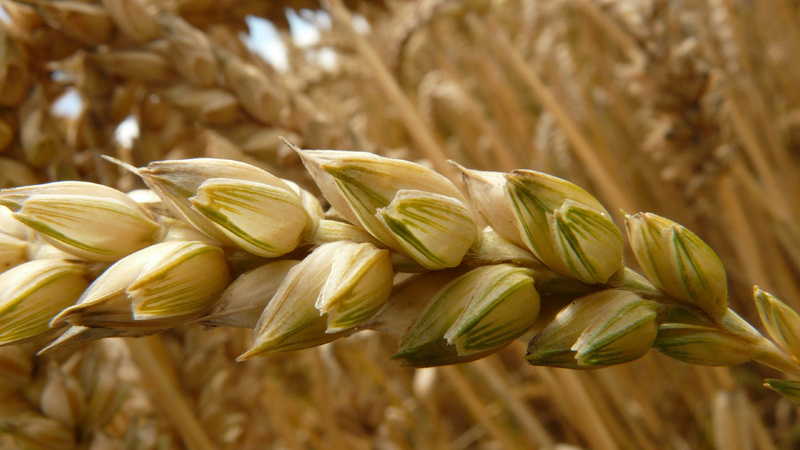
Drought tolerance
The main advantage of spring wheat is its unpretentiousness to growing conditions. The varieties grow in both rainy regions and arid ones, for example, in Ethiopia.
Important. Drought tolerance of spring wheat varies by cultivar.
Some varieties (Voevoda, Annushka) were bred specifically for arid steppe regions, where there is little precipitation in autumn and practically no snow in winter.
With a lack of moisture, wheat yield decreases. So, for example, the Voivode is capable of producing 25 centners / ha. In dry summer - 11 c / ha.
Disease resistance
With proper care, spring wheat is highly resistant to diseases, both fungal and viral. It is even used as an insurance grade in risky farming areas.
As a preventive measure, crops are treated from:
- yellow and brown rust;
- powdery mildew;
- stem rust;
- septoria.
For these purposes, according to the instructions, fungicides are used:
- "Tilt" - 0.4 kg / ha;
- Fundazol - 0.6 kg / ha;
- Bayleton - 0.5 kg / ha.
Processing is carried out in the tillering phase. When the first signs of the disease are detected, repeat.

How does it endure the cold
The varieties are resistant to moderate temperature drops. However, soft spring wheat tolerates cold better than durum wheat.
Seeds are able to germinate already at + 1 ° C. As soon as the soil at the planting depth warms up to + 5 ° C, seedlings are expected on the 21st day. The comfortable temperature for the start of active growth is + 13 ° С.
Spring culture is able to withstand short frosts. During grain germination - up to -12 ° C. During tillering - up to -10 ° С.
Attention. Frosts are fatal during flowering and grain filling.
Lodging resistance
Durum spring wheat is the least prone to lodging. Plants are exposed to maximum lodging in regions with high humidity and strong gusts of wind. The degree of exposure to this factor depends on the variety. For example, Rosinka and Chernyava are highly resistant to lodging.
Shatter resistance
Depends on the timing of ripening... Soft wheat is more prone to shedding - as soon as it ripens. To avoid this, they strictly observe the time of its cleaning.
Solid is more resistant. However, if it is overripe, its stem breaks off at the root.
Important. Lodging of wheat makes harvesting difficult and halves the harvest.
Lodging is not typical for varieties such as Daria and Irgina.
Yield characteristic

Spring wheat has a high yield. So, in central Russia, it averages 13 c / ha. The exact figures depend on climatic conditions - temperature and rainfall.
In the Non-Chernozem and Central Black Earth regions, the yield reaches 3.5 t / ha of grain that meets the highest standards.
The best spring wheat varieties for the middle lane
The climate of central Russia is suitable for growing any variety of spring wheat. They sow it in early spring without preliminary soil preparation.
The following varieties are best suited for regions of the middle lane.
Uralosibirskaya
Soft spring wheat. The plant is tall - up to 1 m in height. Solomina is weak, ear is pyramidal, grain density is medium. 1000 grains weighs 35 g. It responds favorably to watering and fertilization. A distinctive feature of the variety is its high yield - up to 45 c / ha. It has a high immunity to diseases (rust, powdery mildew, fusarium). Resistant to lodging. Ripening early - up to 90 days from the day of sowing.
Darya
Popular soft spring wheat... An early hybrid, bred by crossing the G18 hybrid and the Belarusian variety.
A plant with a weak stem, prone to lodging, erect. Spikes are pyramidal, round, pale milky in color. The grains are golden in color, oval or round. The variety is early ripening, from the day of sowing to ripening it takes about 80 days. Suitable for growing both in central Russia and in the southern regions.
Daria has a high yield - 30 c / ha. Top quality grain. Has a high immunity to septoria, and weak - to rust.
Omsk
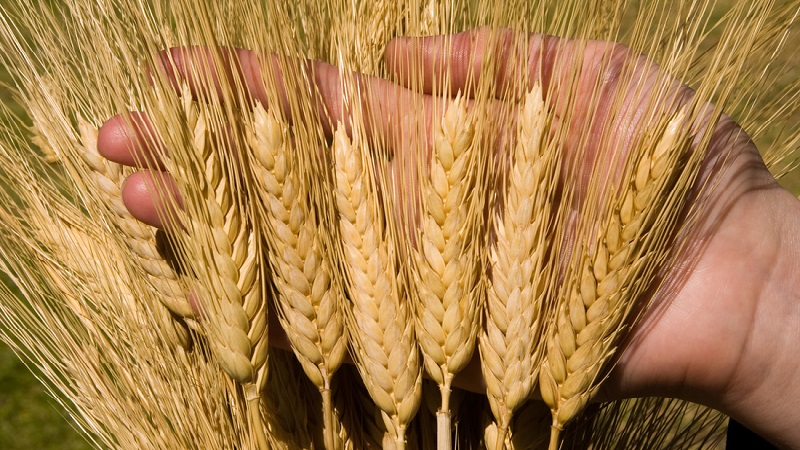
Soft spring wheat... The plant is tall - 106 cm. The grains are large, round-oval, with good baking properties. The mass of 1000 grains is 50 g. The variety is mid-season - 88 days pass from the day of sowing to full ripening. High-yielding - up to 65 kg / ha.
Possesses persistent immunity to diseases (fusarium, powdery mildew, rust). It is also drought-resistant, heat-resistant, not prone to lodging. Retains high quality when over-growing.
Boevchanka
Plant up to 1 m high. The grains are large, highly elongated, oval... They have a high gluten content, which makes them suitable for baking bread. The mass of 1000 grains is 35 g.
Strong wheat variety. Resistant to lodging, diseases (septoria, powdery mildew), weather changes. It is used as insurance for late sowing. Boevchanka is characterized by a high yield - 53 kg / ha.
Irgina
This is a soft spring wheat intended for cultivation both in the middle lane and in the south. In a warm climate, it gives 100% yield. Irgina is early maturing with an accelerated growth rate - up to 75 days.
Average yield - about 35 kg / ha. Irgina is resistant to lodging and powdery mildew.
Imported spring wheat varieties
Among the varieties of spring wheat, not only domestic but also foreign ones are popular.
Munch
German variety of spring wheat. Late ripening - up to 98 days from the day of sowing. Plants are 75 cm high. The grains are medium, glassy or semi-glassy. The mass of 1000 pieces is from 40 to 50 g. It has high baking properties due to the significant content of protein (17%) and gluten (40%).
The variety is resistant to lodging. It has a high immunity to powdery mildew and low immunity to septoria. The yield is 65 kg / ha.
Bunty
A mid-season (up to 80 days) variety bred in Poland. Grain of the second quality group.
The yield is high - 66 kg / ha. Resistant to powdery mildew, less resistant to septoria spike.
Cox
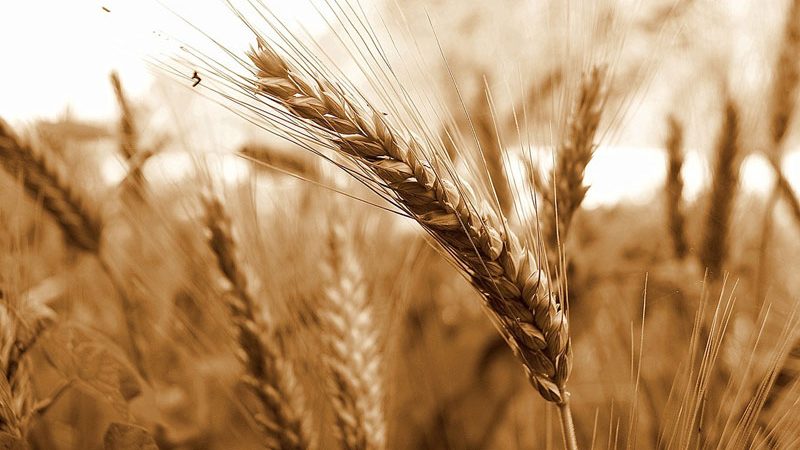
Another popular variety from Poland. Medium late ripening (about 86 days). The grains are large, rounded. The mass of 1000 seeds is about 45 g. It has high baking properties.
Ripening is uniform, productivity is 60 kg / ha. Reacts well to growth enhancers.
Imported spring wheat varieties have a number of advantages over domestic ones:
- High baking properties due to the gluten content in the grain.
- Resistant to lodging.
And a number of disadvantages:
- Low immunity to ear septoria.
- Less unpretentious to the climate in which they grow.
Features of cultivation of spring wheat
Spring wheat is demanding for agricultural technology. It takes a lot of effort to get high yields.
Seeding rates
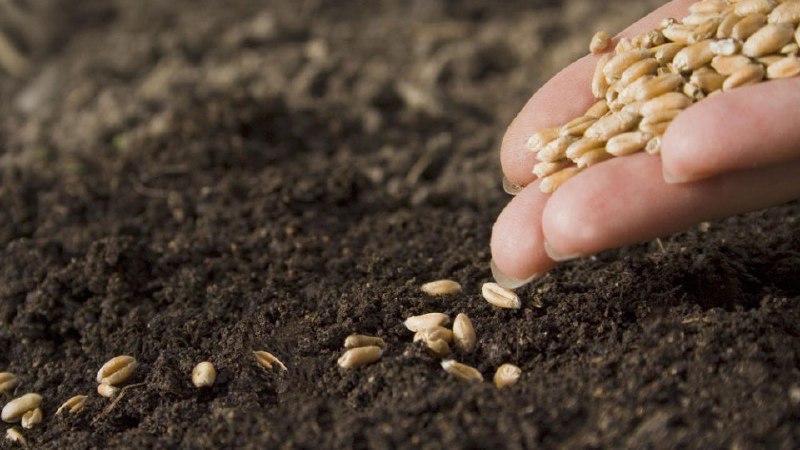
The seeding rate of spring wheat seeds depends on many factors:
- varieties;
- growing region;
- soil;
- sowing method.
The average figure is 5 million viable seeds per hectare. In undersized varieties that have a high resistance to lodging and are grown on fertile soils, it is 6 million / ha.
In the humid regions of the Volga region - 5 million / ha.
In the dense soil of steppe regions - 4 million / ha.
Cultivation technology
To get a high and high-quality harvest of spring wheat, they follow the cultivation technology. It includes the following activities:
- compliance with crop rotation;
- implementation of the necessary agricultural techniques.
Precursor plants
Spring varieties are planted after legumes, row crops, winter crops.
If the predecessor plant - winter wheat, then the accumulation of diseases and pests that are characteristic of the crop is possible in the soil. This will adversely affect the future spring crop.
Fertilizers
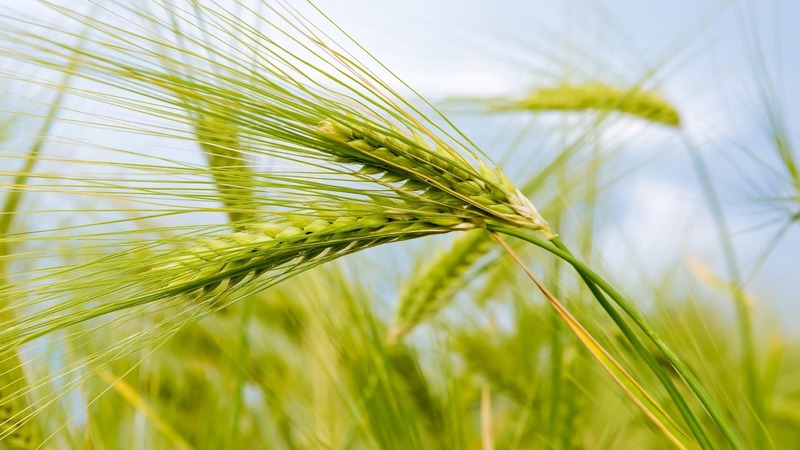
Varieties of this species (especially hard ones) prefer fertile soil enriched with potassium, phosphorus, nitrogen. To form 1 ton of grain, you need:
- phosphorus - 11 kg;
- nitrogen - 30 kg;
- potassium - 22 kg.
It is important to follow the fertilization schedule.
During sowing, the following is introduced into rows to a depth of 15 cm:
- superphosphate in granules - 14 kg / ha;
- phosphorus (in complex compositions of diammophos and ammophos) - 11 kg / ha.
The amount of organic fertilizers depends on the humus content. At high, up to 15 tons of organic matter per hectare will be required. At low - 35 t / ha.
During the earing (flowering) period:
- feeding with nitrogen (urea) - 30 kg / ha;
- micronutrient fertilizers (boron, zinc, copper) - 20 kg / ha.
Plants respond positively to nitrogen and nitrogen-phosphorus compounds, for example, azofosk, nitofosk, calcium nitrate, ammonia water.
Reference. Application rates depend on the predecessor plant, weather conditions and soil composition.
Site preparation before sowing
It starts as soon as the predecessor has been removed. Disking is performed, then harrowed and leveled.
Seed preparation
Before sowing, the seed material is carefully selected, cleaned of possible impurities and sorted by size. First of all, large ones are planted, the mass of 1000 grains of which is 40 g.
Then they are treated with special agents to activate growth:
- Lignohumat - 45 g / t;
- Rexolin ABC - 100 g / t.
Processing seed material before planting can increase the safety of the crop by 15%. This is a necessary measure to protect plants from pests and diseases.
Compositions based on flutriafol, triticonazole, benomyl, carboxin and many others are used as a disinfectant. These are drugs such as:
- Vitavax - 3 kg / t;
- Fundazol - 3 kg / t;
- "TMTD" - 1.5 kg / t.
The seed is disinfected with chemicals at least two weeks before sowing.
Grain is processed in one of the following ways:
- Dry etching... The easiest way. For this, special machines are used.
- Semi-dry. For 1 ton of seeds, take up to 5 liters of water. It occurs with the use of specialized equipment.
- Wet, by spraying. Seed material is soaked or watered with compounds dissolved in water. After processing, the grains are dried.
- Hydrophobization. Treatment with polymeric substances that form a film on the surface of the seeds. In this method, fungicides (foundazol) are used. The dressing agent adheres to the grain surface for maximum protection.
Sowing
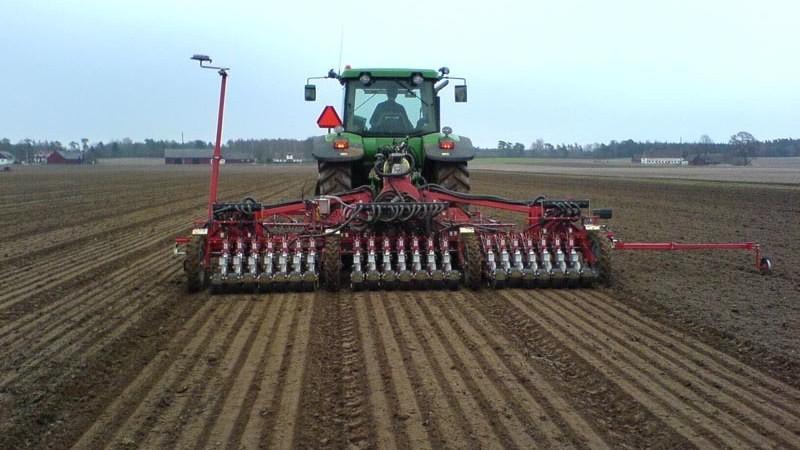
Spring wheat is sown early, in the first half of spring. After the soil warms up to + 5 ° C. Choose a narrow-row method (row spacing no more than 7 cm) with a planting depth of up to 5 cm.
Important. With excessive deepening, seed germination is significantly reduced.
Features of care and harvesting
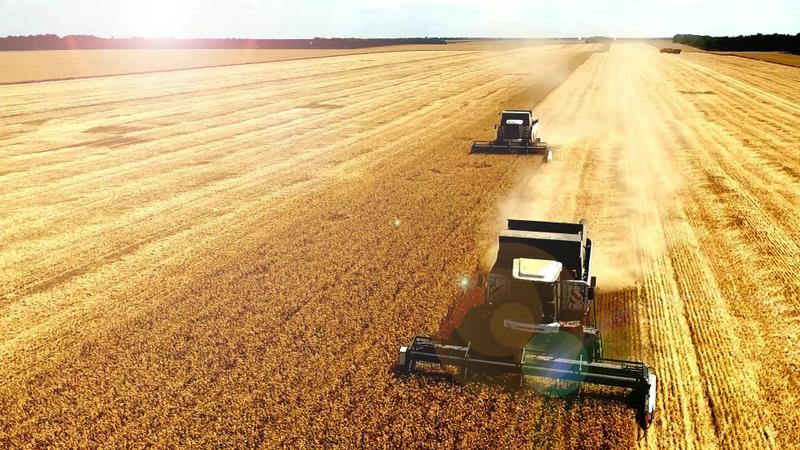
The following techniques are used to care for spring wheat:
- rolling;
- harrowing;
- top dressing;
- weed control.
Harrowing is carried out at a depth of 3.5 cm. Young weeds are removed. For the destruction of weeds, special chemical compositions are used - herbicides ("Semazin" 80% - 0.5 kg / ha; "Illoxan" 30% - 3 l / ha). The main feeding is carried out during the flowering phase of cereals.
Chemicals are used to combat pests and diseases:
- Bayleton - 0.5 kg / ha;
- "Tilt" (emulsion) - 0.4 kg / ha.
Planting is sprayed with herbicides:
- "Dialen" - 0.3 l / ha;
- ammine salt - 1.5 l / ha.
Watering is carried out moderately and only in arid regions.
After the grain is full (the timing depends on the type of wheat, from 75 to 98 days), it is important to harvest on time. Many varieties are prone to lodging and shedding, overripening, or breaking at the root. For harvesting, two methods are used: separate and direct combining.
The second is implemented in two steps:
- Plants are mown.
- Dried and threshed.
Maximum harvest time - 10 days in good weather.
Conclusion
Spring wheat is the most significant crop both in our country and around the world. Selecting a variety taking into account the climatic characteristics of the region, observing the cultivation technology and harvest time, they get high quality grain.